South Ari Atoll is seen as a hotspot for whalesharks and manta rays, and as Stuart Philpott discovered, it is one of those few places that can actually live up to the hype.
There can’t be many dive destinations in the world where whaleshark and manta ray sightings are virtually guaranteed all year round. During my trip to South Ari Atoll in the Maldives, Prodivers Dive Centre delivered exactly what they promised with some awe-inspiring results, all while being pampered at a luxury all-inclusive resort surrounded by a palm-fringed sandy beach. Whatever happened to my rufty-tufty Brit diver image?
Vakarufalhi Island was my first port of call and I arrived in style via seaplane and boat taxi transfer. With all the check-in formalities completed, I ventured over to the dive centre located behind the reception building to meet Prodivers manager Antonio Ferraro.
Antonio, Italian born and bred, was extremely friendly and approachable with a huge passion for life and the sea. He had been running the dive centre since 2009. His family lived on a neighbouring island, so Antonio had bought a speed boat to commute to and from work every day! The centre employed four full-time instructors and offered the full range of courses and daily guided dives to no less than 60 local sites.
The 76-room four-star superior deluxe resort re-opened in 2009 after much renovation work. Antonio said that before the changes the resort had been well known on the Italian market as a diver’s island with more than 70 percent of the guests specifically coming to dive. The new classier upmarket image had seen a down turn in divers. Antonio said the busiest period was between December and March. April, being much quieter, offered the best price deals.
I was booked into a beachside villa with outside bathroom. I originally had my eye one of the 12 water villas, but unfortunately they were all fully booked. Resort GM Thomas Venzin said ‘this is a typically classical Maldivian resort’. I noticed that there was no communal swimming pool.
Thomas didn’t see the need as the resort was surrounded by a clear blue sea as warm as my bath water.
Antonio said: “South Ari is one of the best places in the world for whaleshark sightings. Divers rarely leave without seeing one’”. We patrolled up and down the reef looking for any signs of whaleshark activity.
I ventured up on the roof for a brief spell of shark spotting but the intense sunshine was just too much for me to bear. A shout came down from Antonio. A whaleshark had been sighted just below the surface heading straight towards us. We turned the boat around and gave chase, but the shark had disappeared from view.
On the day there were at least ten boats searching for whalesharks, some with divers and others with large contingents of snorkellers. Whenever a boat found a shark everybody homed in on the area, snorkellers and divers jumping in everywhere. There didn’t seem to be any kind of etiquette. I thought the shark was supposed to be given some space?
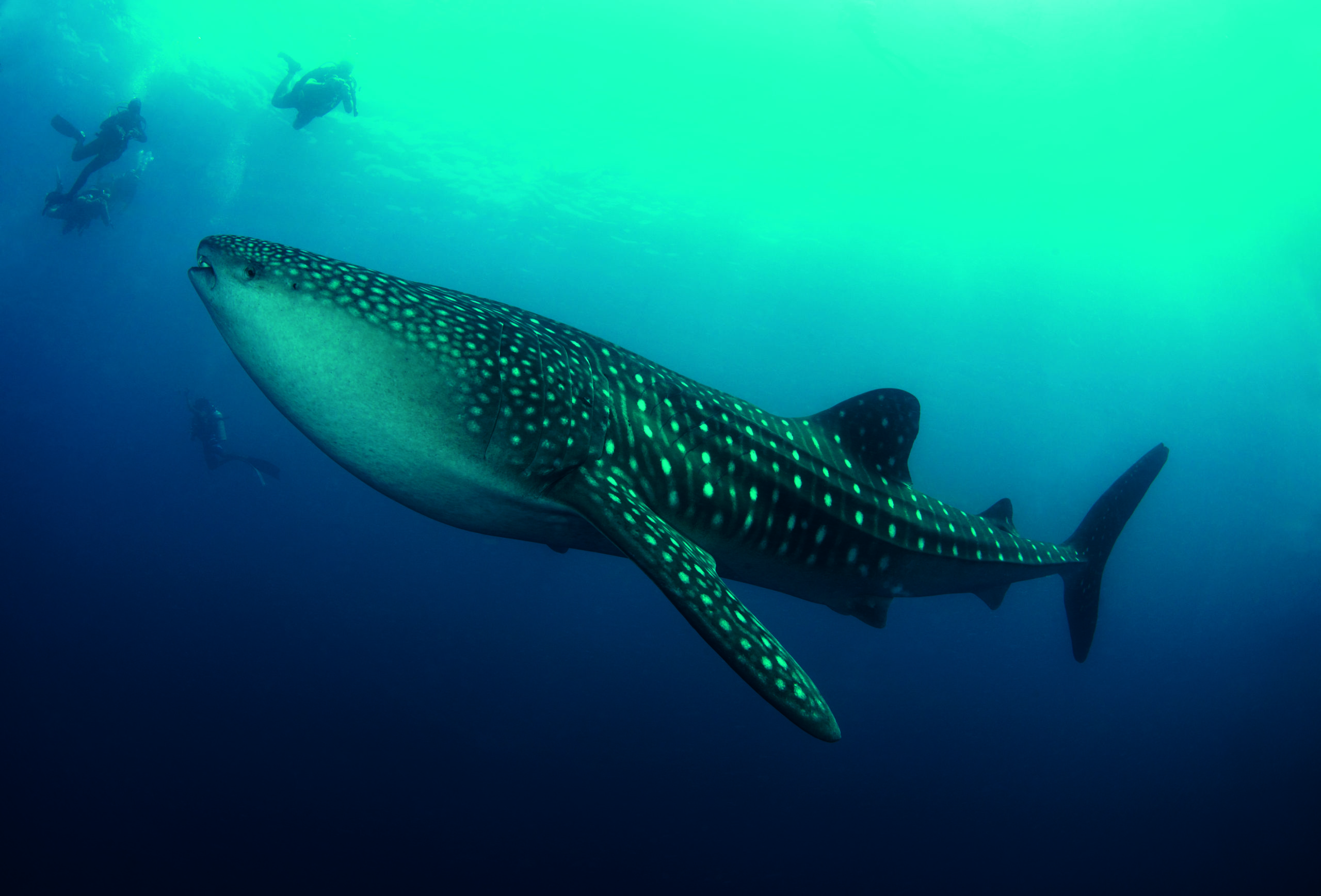
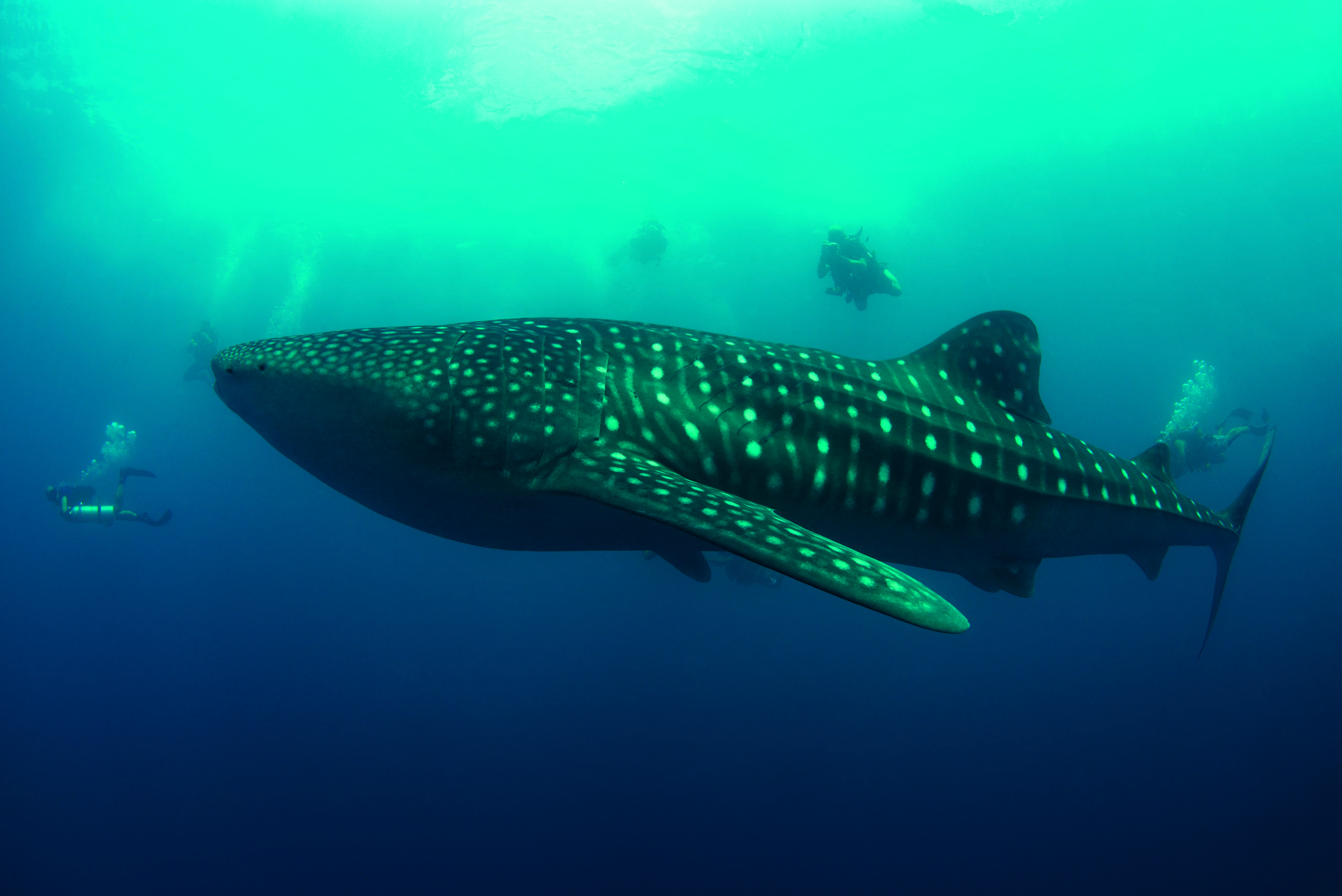
We headed in the opposite direction, hoping to find a whaleshark well away from the horde. I was sitting by my dive kit waiting for the signal. After 30 minutes of trawling back and forth the tension was beginning to get unbearable.
Then the moment I got up for a swig of water and a slice of banana cake, another shark was sighted. We all kitted up at breakneck speed and jumped into the water ahead of the whaleshark.
Antonio had already briefed me not to get in front of the shark as it would probably dive down out of sight, and to stay on the reef side so that the shark didn’t feel hemmed in. The visibility was around 20 metres so not crystal clear. I saw a blurred shape coming towards me and then a giant mouth and dorsal fin came into view. The mouth was closed and I couldn’t see any remoras attached to the underside.
Later Antonio told me this was only a five-metre juvenile but it looked big enough! I was finning hard trying to keep up. Carrying my housed camera in front of me didn’t help with my streamlining. I managed to fire off around five or six shots and then it was gone. I had chosen my 16mm lens and although this was perfect for big fish, I still needed to get close for a full-frame shot.
We were also quite shallow so it was difficult to get the lighting right. Now that I had fine-tuned all my settings, I was hoping we would get at least one more chance. Biologists recently discovered that the South Ari whalesharks have some unique behavioural traits.
They mainly feed on a type of plankton found in deep water. Remora fish don’t like deep water in the range of 600-1,000m, so this is why they are rarely seen attached. The oxygen-depleted deeper dives make the sharks hypoxic, so they often come into the shallows to recuperate, sometimes surfacing to gulp in air. Some sharks have even been seen sucking up divers exhaled bubbles!
The next whaleshark was a good ten metres long and seemed far more relaxed. I managed to swim alongside the shark and even got sideswiped by its pectoral fin. I noticed some serious scarring along the shark’s mid rift probably caused by a propeller.
. More boats appeared overhead and I could see and hear snorkellers splashing into the water. An overzealous snorkeller kicked the whaleshark in the mouth, which frustratingly sent it fleeing into deeper water. On the day I saw three different whalesharks at sites Boda Finolhu Thila, Maamigili Beru and Dhidhoo Beru Faru. Although this stretch of reef was inside SAMPA (South Ari Marine Protected Area), I didn’t see any kind of management or policing.
Most of my nocturnal activities revolved around night diving and to my surprise the 52-metre-long Kudhimaa wreck exceeded all my expectations. The artificial reef project was located off Machafushi island just 10 minutes boat-ride from the dive centre.
The whole deck area was awash with bright orange cup corals, tentacles extended and feeding. I found a blue parrotfish encompassed in a protective membrane. Coral grouper were patiently being cleaned by shrimps. A large intimidating moray swam towards me, stopped for a picture, and then disappeared down a stairwell.
Dive guide Fareed highlighted a number of colourful nudis in his torch beam. I definitely wasn’t short of marine life subjects. The 40-minute, 20m-deep dive flew by. My only regret was not going back for a second helping.
Half way through the week I transferred to Lily Beach Resort and Spa on Huvahendhoo Island about 20 minutes boat ride away. The popular 150-room five-star plus all-inclusive resort is at 95 percent capacity throughout the year. Guests are predominantly Chinese and European.
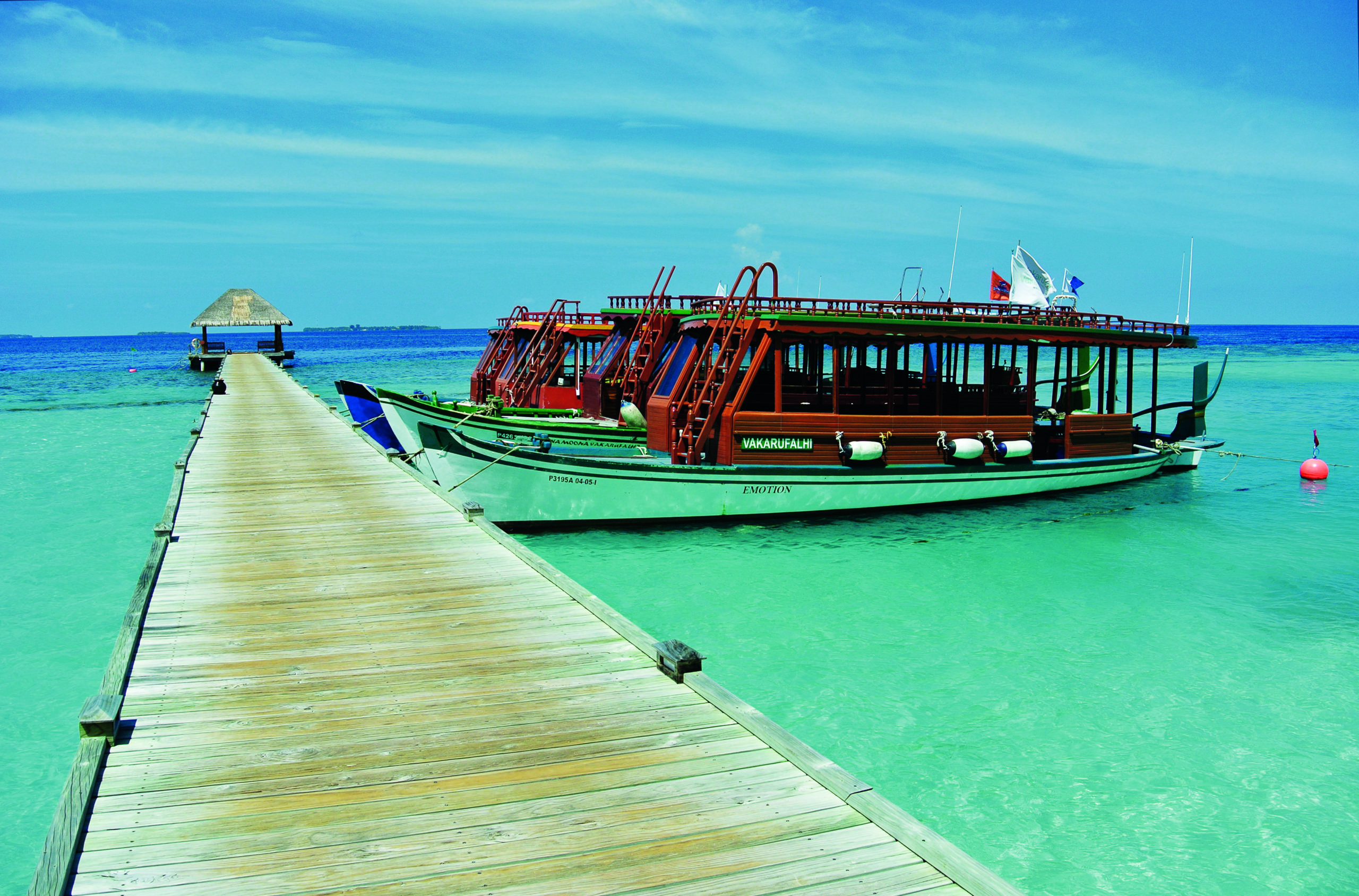
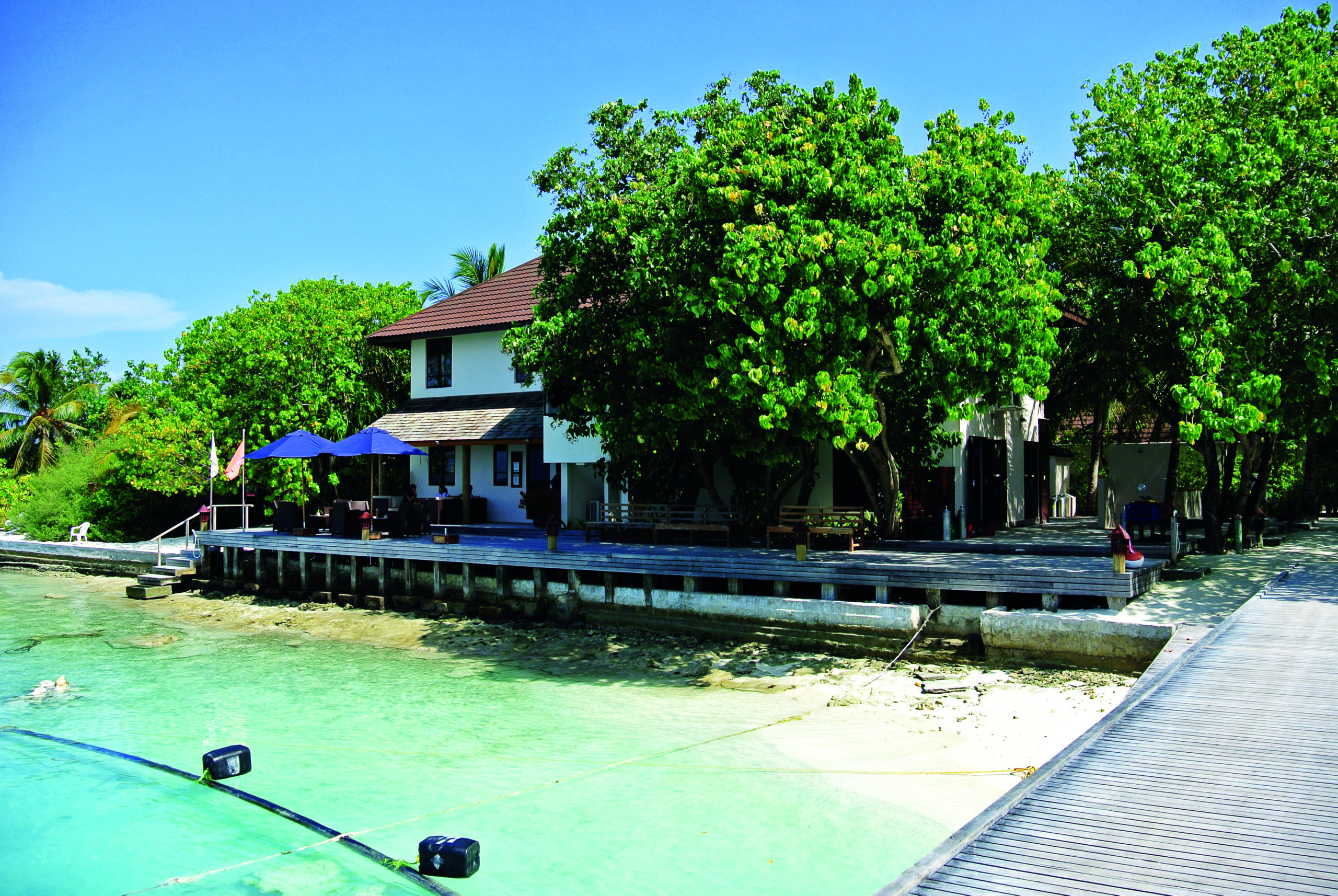
I had a full tour of the island and liked the fact that families were accommodated at one end of the island while amorous couples, newly-weds and those seeking some peace and quiet had their own haven at the opposite end. The facilities were absolutely top rate and included an air-con gym, tennis courts and multiple swimming pools. I couldn’t fault the buffet-style food.
There was so much choice. I counted more than 50 different cheeses on the cheeseboard alone! There was also a stylish a la carte Thai/teppanyaki restaurant for diners that preferred a more-personal service.
The Prodivers Dive Centre was managed by couple Steve Brumby and Jutta Baecker. Jutta had previously worked as dive manager at Prodivers Kuredu for seven years and altogether had more than 25 years of diving experience. The centre employed eight full-time staff including seven qualified instructors speaking more than six different languages. Jutta said: “We are open 365 days a year and dives are rarely cancelled due to poor weather”. They will also go out diving with just one paying customer if necessary. The dive centre had five Apollo AV2 scooters for hire but they didn’t seem to be very popular. Jutta said: “Guests don’t think it’s worthwhile”. At around $20 USD per dive, I thought this was more than reasonable.
As soon as my feet touched sand I was whisked me away for yet another exhilarating night dive on the house reef. Steve guided me to a shallow cave full of nurse sharks. Further along I encountered marauding reef sharks, big-eyed trevally, moray and a number of flying stingrays.
The dive boat was full to capacity for Prodivers manta day trip to Hukuru Elhi Faru. But I soon realised that manta rays and French divers can make a fiery combination. The best time for seeing manta at South Ari is from May through to October. I was slightly out of main season and didn’t think there would be any close-up sightings, so chose a mid-range lens for my housed DSLR rather than my trusty wide-angle fish-eye.
A manta appeared within the first few minutes of the dive. I didn’t realise that on sighting a manta everyone in the group had to plonk themselves down on the reef and not move a muscle, thus not frightening the barrel rolling manta away. A fatal mistake! I was moving around with the manta trying to get the perfect composition, which somewhat upset certain parties. When we got back on-board I was asked to go outside for a punch-up, which is quite difficult to do on a boat! Lesson well learnt. I went off on my own with Steve and found another manta to play with and spent a good 15 minutes getting far too close for the lens I had chosen, but nonetheless this had been an extremely memorable dive for more than one reason.
Jutta’s favourite dive site was called 5 Rocks. She said it was perfect for scooters and strangely enough I had already spent an hour with Antonio plus scooters at this very site. There were caves and narrow canyons to navigate through as well as shark sightings, huge shoals of snapper and stingray encounters.
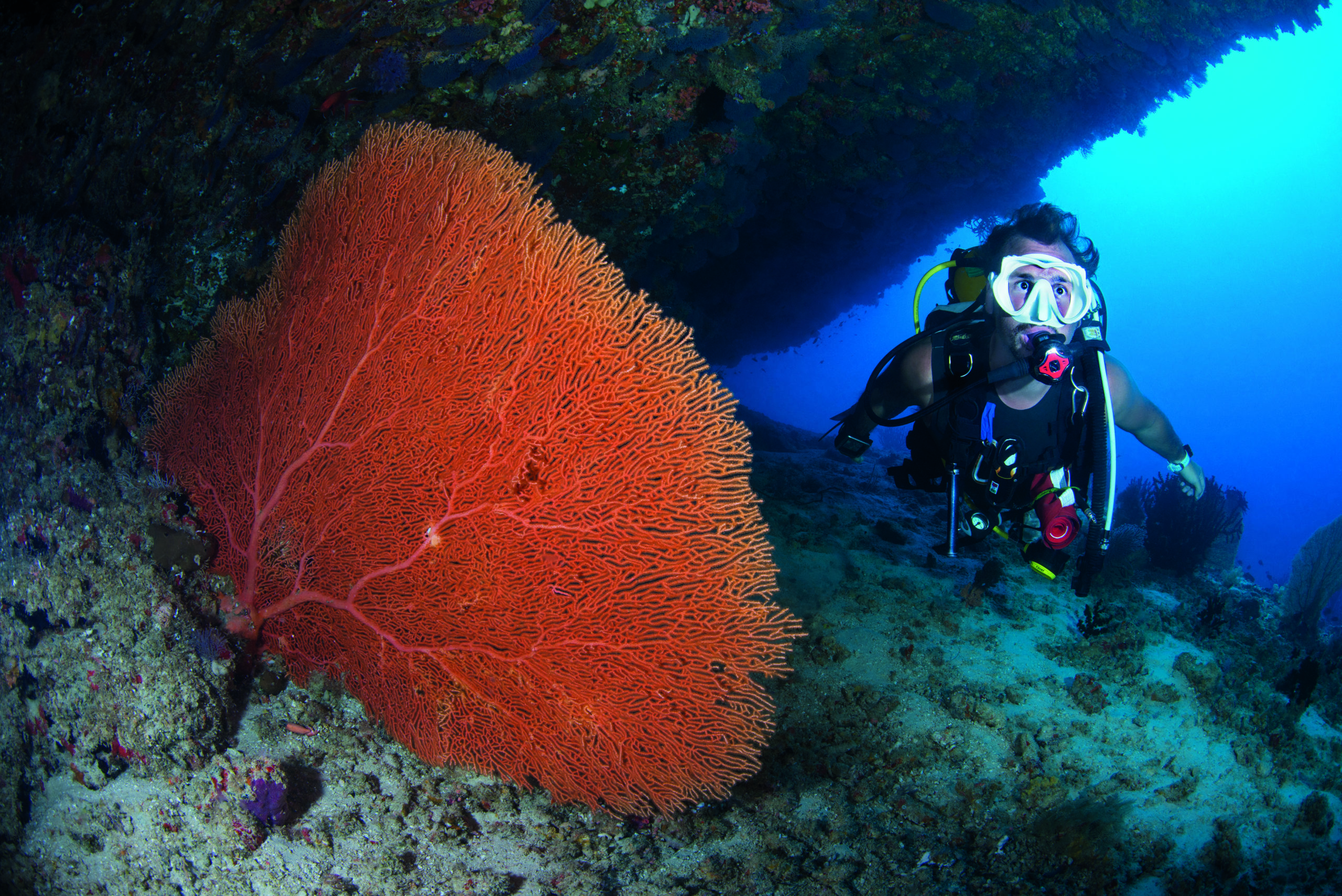
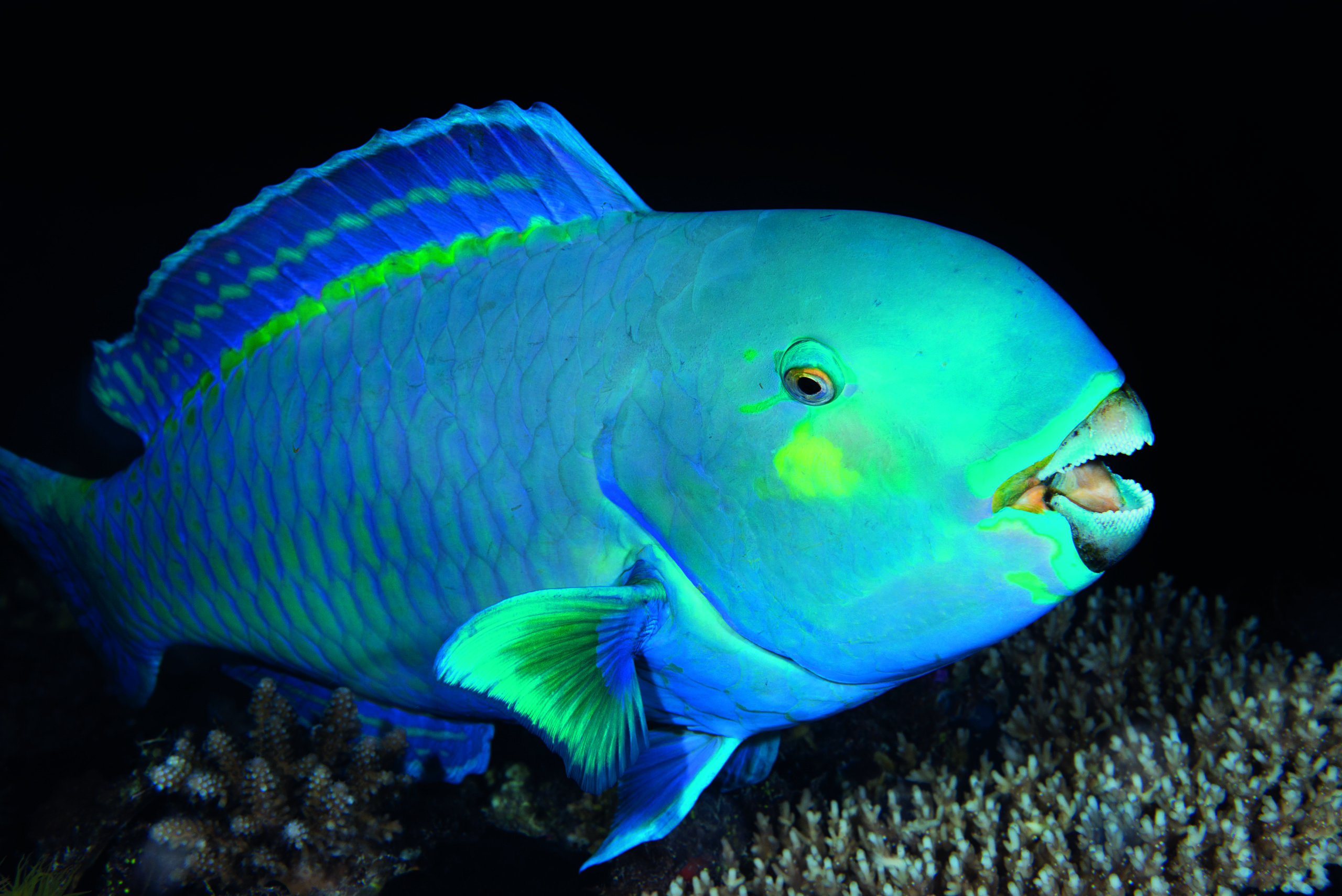
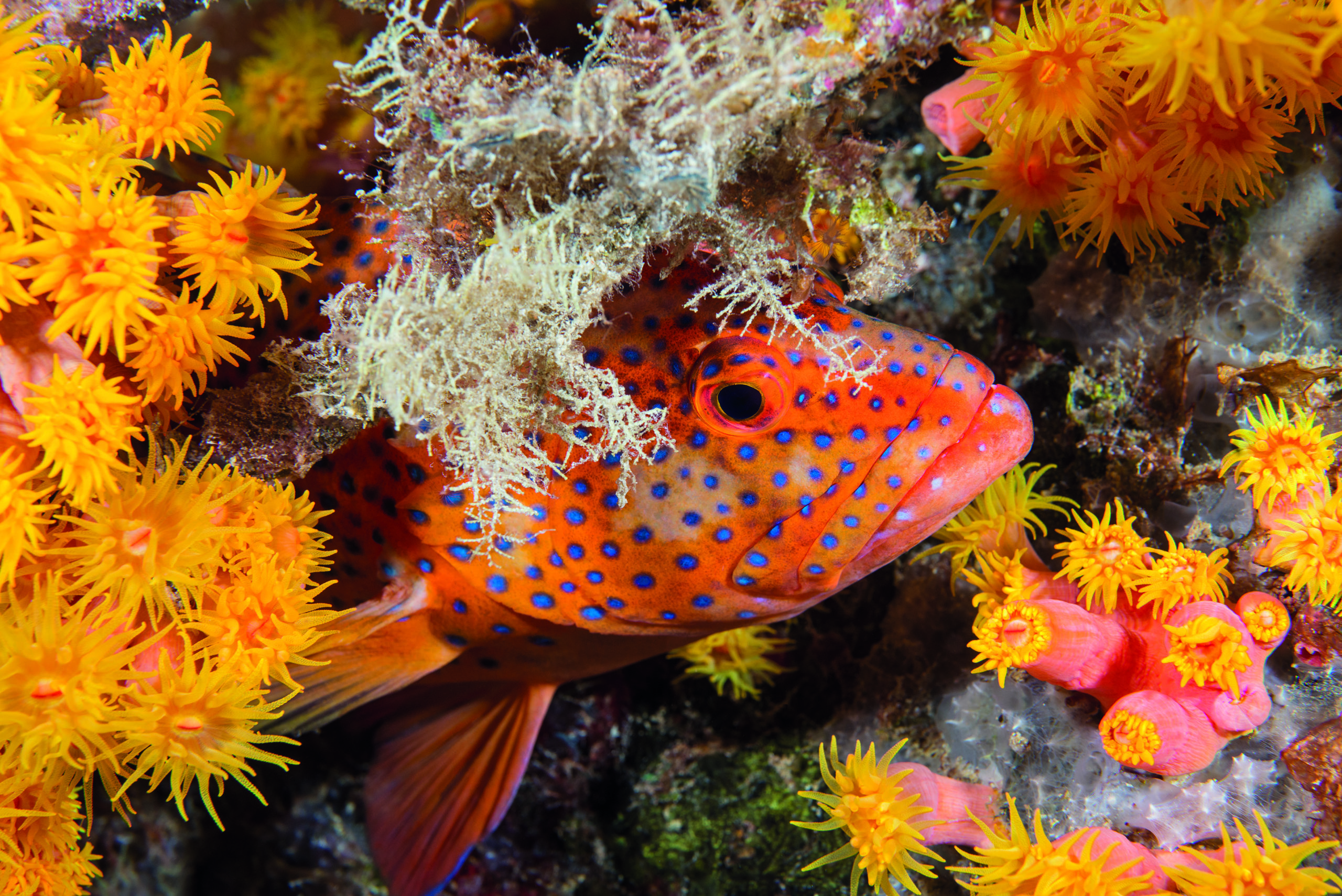
I have always had a soft spot for frogfish, so when Jutta told me she had found three froggies at a site called Ali Thila, I couldn’t resist the temptation. We headed out just before dusk. Jutta searched for 30 minutes in the fading light but the froggies were proving to be elusive.
Jutta had promised me a froggie and true to her word she found a bright red froggie on top of the pinnacle. The fist-sized froggie was tightly wedged between two coral heads and quite difficult to photograph but I managed to put my macro contortion skills to good use and eventual got a half-decent picture.
South Ari offers divers everything from shipwrecks, big animal encounters and froggies to the most awe-inspiring night dives. Coupled with premier dive centres (www.prodivers.com), a very high standard of accommodation and a daily spread of food fit for a Queen’s banquet, the only real negative to consider is the cost.
The final score for my two full-day boat expeditions totalled mantas 2 whalesharks 3. This was a more than satisfying result considering my visit had been outside of the main season. After the initial confrontation, the France V England boxing match was put on hold indefinitely. A gentleman’s handshake and a few beers in the bar settled the score in a much-more-civilised fashion – well, this was the Maldives, after all!
The oxygen-depleted deeper dives make the sharks hypoxic, so they often come into the shallows to recuperate, sometimes surfacing to gulp in air. Some sharks have even been seen sucking up divers exhaled bubbles!
I was moving around with the manta trying to get the perfect composition, which somewhat upset certain parties. When we got back on-board I was asked to go outside for a punch-up, which is quite difficult to do on a boat!
Photographs by Stuart Philpott
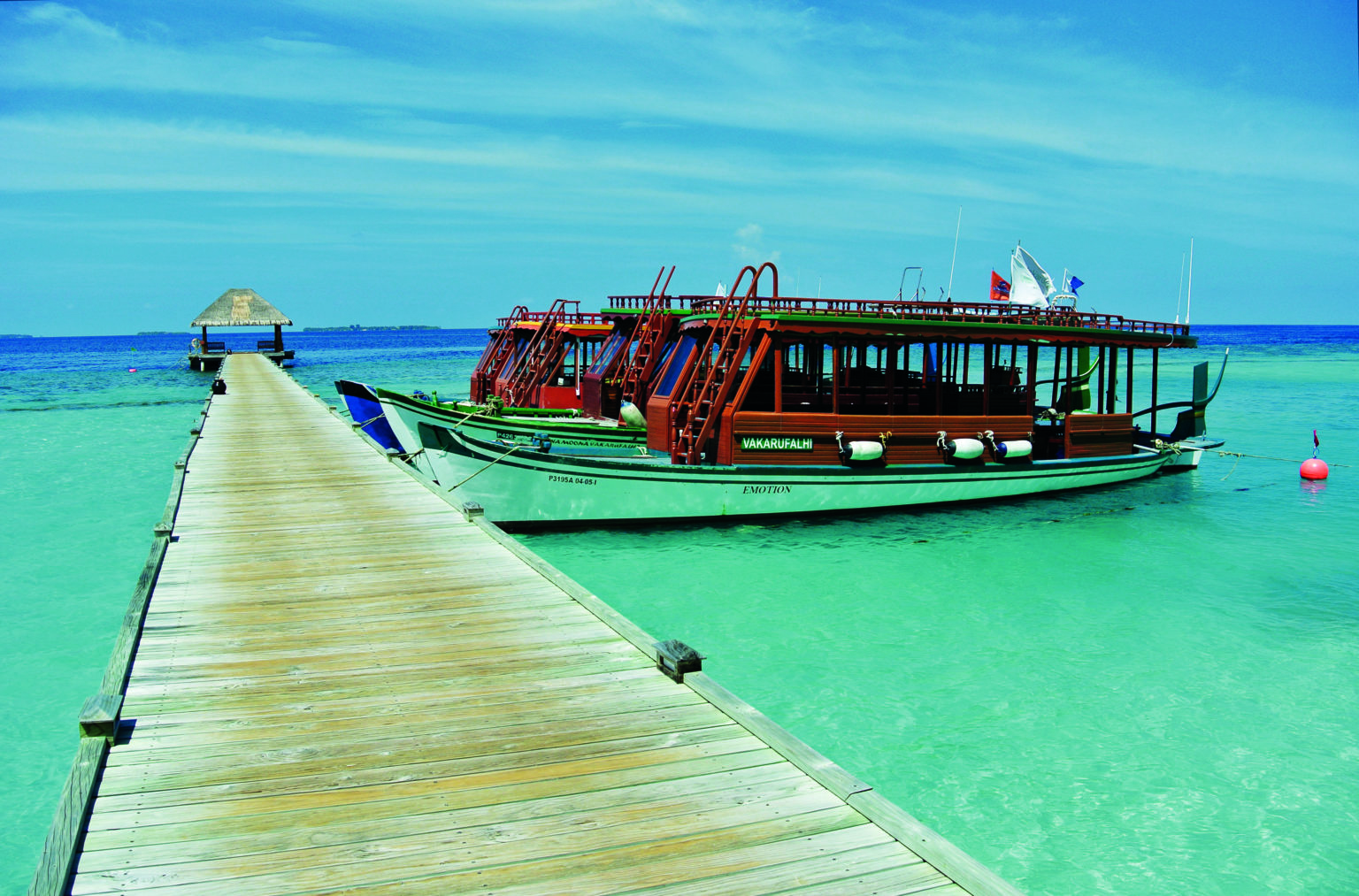
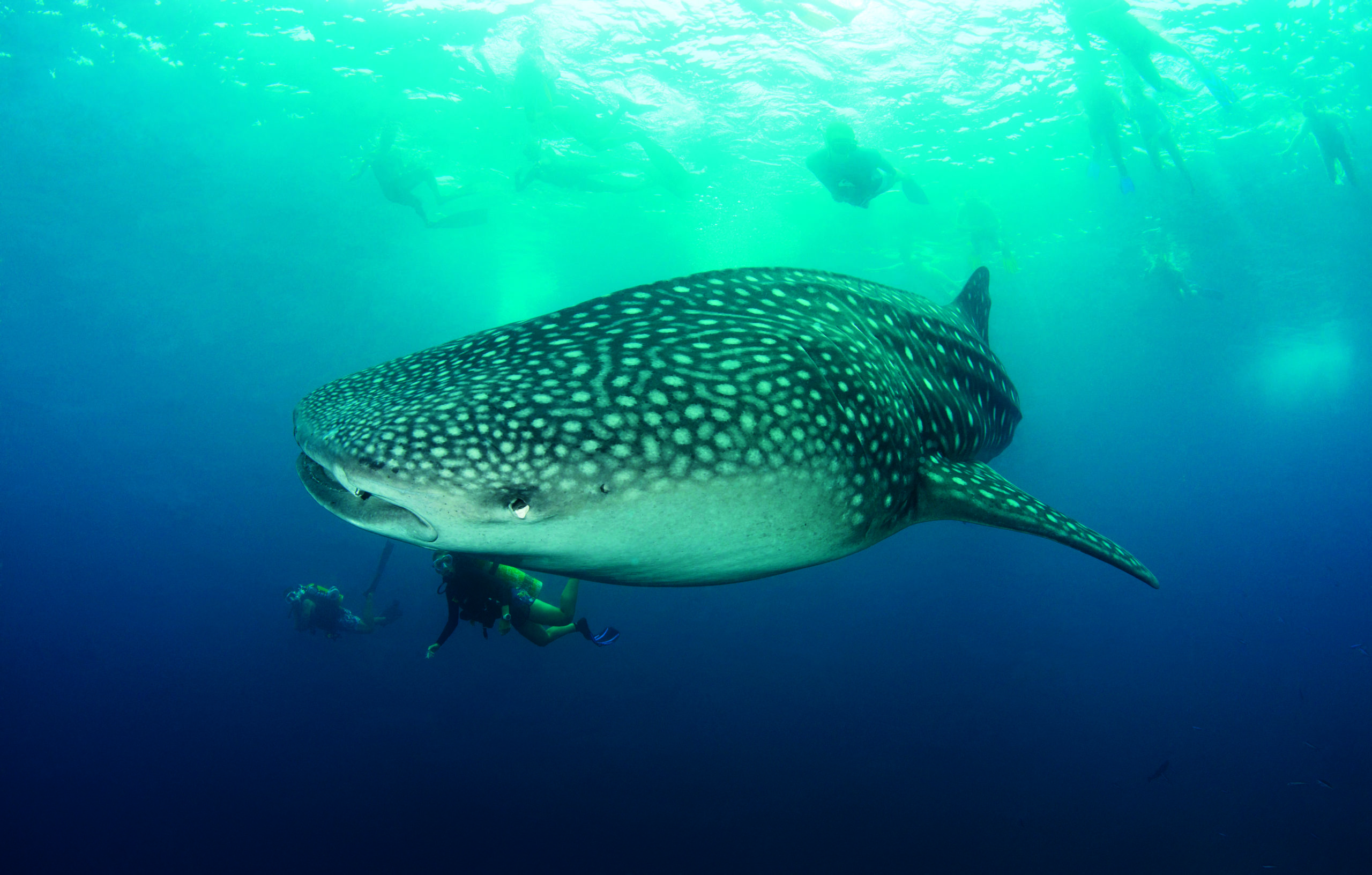
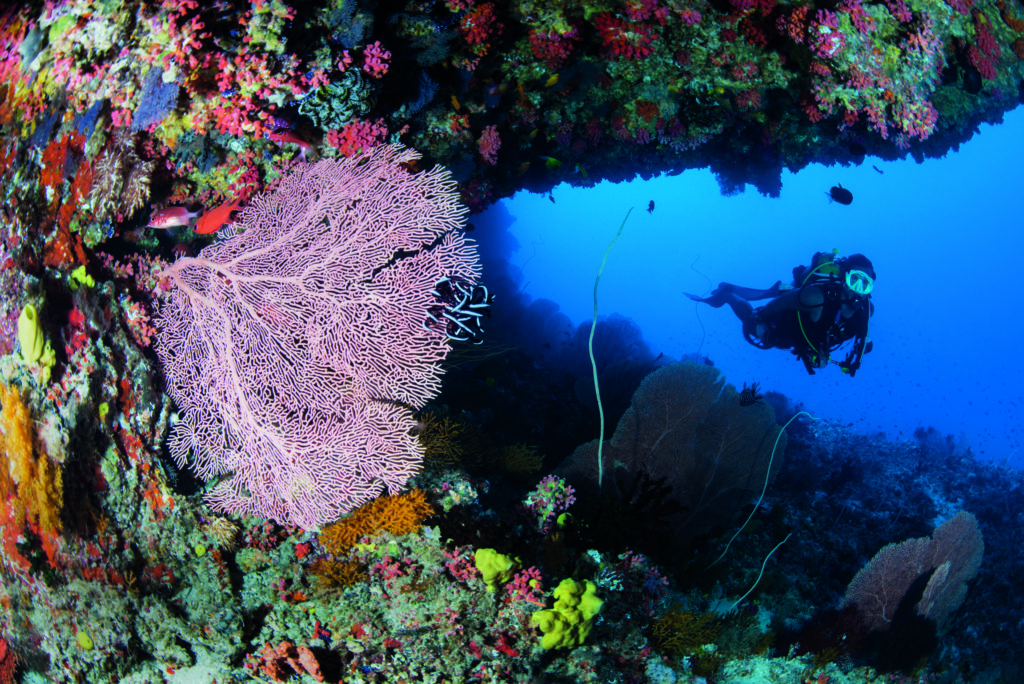
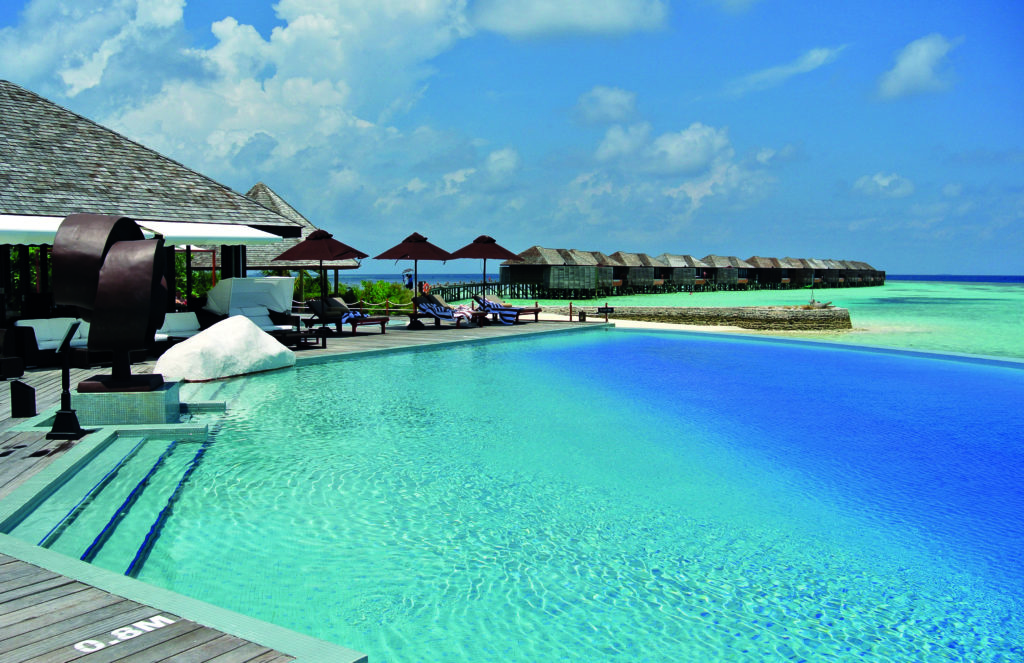
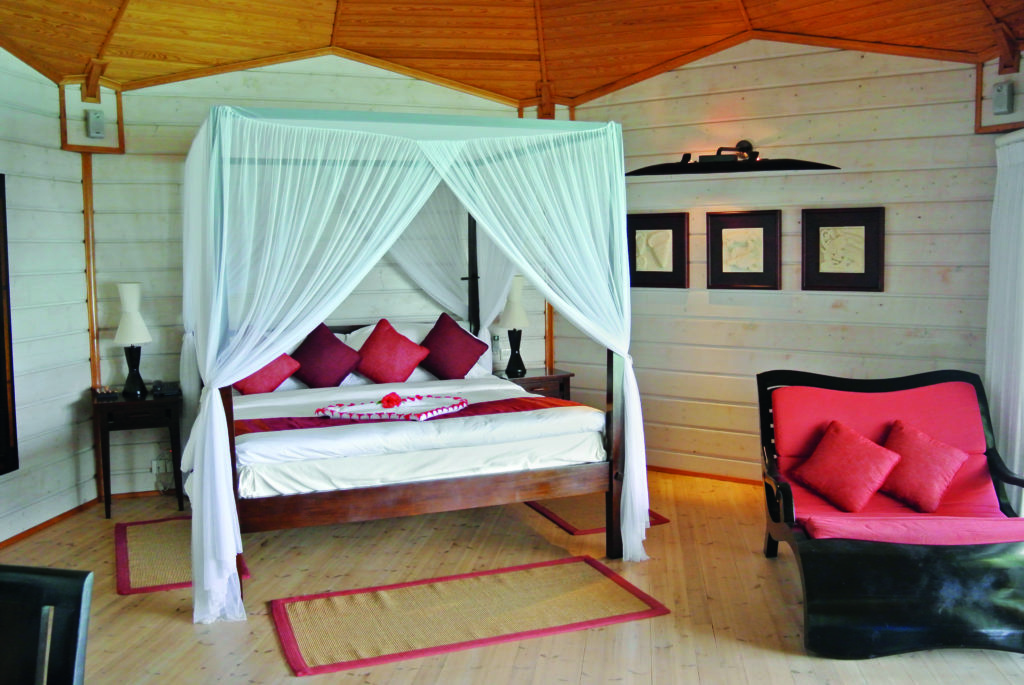








Great Article, having been to the North Mari Atol 4 times, I think I’ll head down to the south and give it a try in October (finances allowing of course). I;ll give the prodivers a try. Thanks